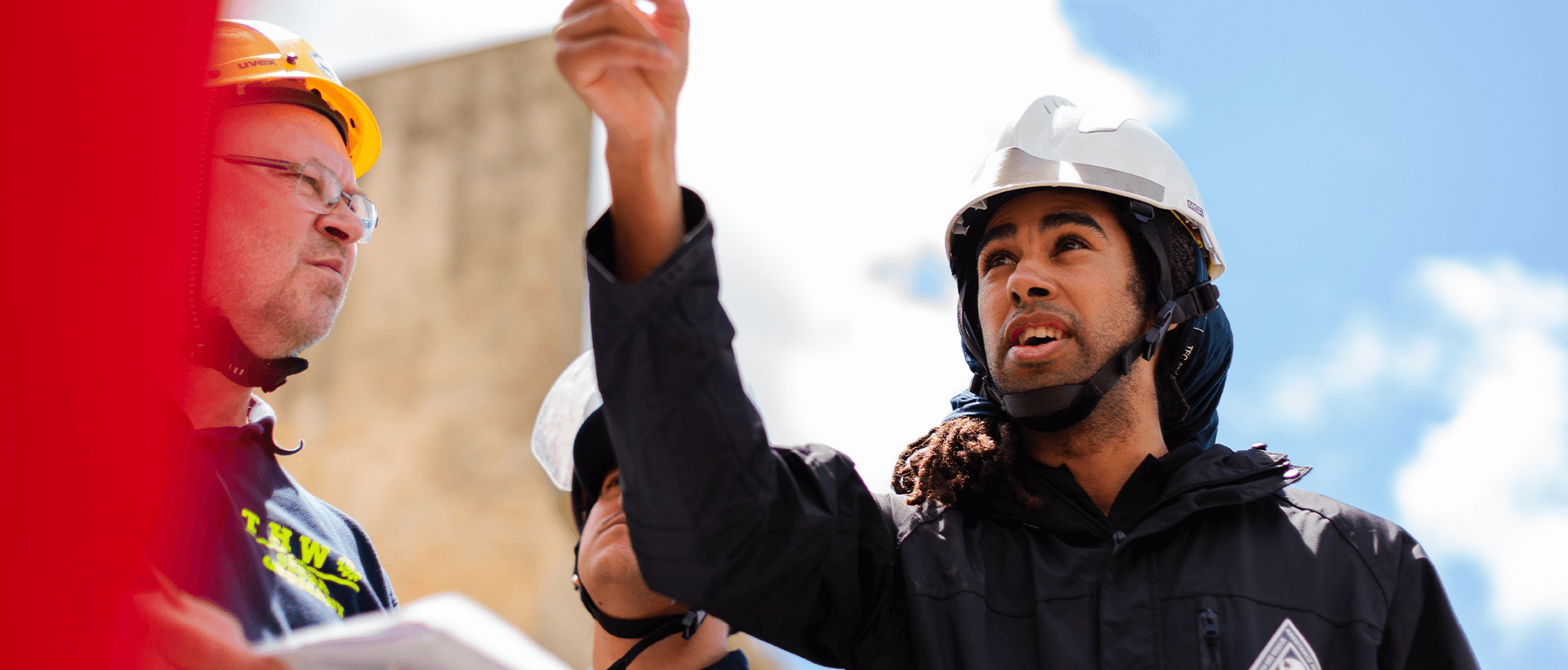Motivation is a critical factor in driving workplace success, as it influences employee performance, job satisfaction, organizational behavior and overall productivity. When employees are motivated, they are more likely to be engaged, committed, and contribute to the organization’s success. In a constantly evolving business landscape, organizations must prioritize fostering motivation to stay ahead of the competition and maintain a thriving workforce.
Motivated employees are more productive because they are driven to achieve their goals, work efficiently, and perform at their best. This increased productivity can lead to higher profits and a more competitive organization. In addition, motivated employees tend to be more satisfied with their jobs, resulting in lower turnover rates, better teamwork, and a more positive work environment. Employee satisfaction also has a ripple effect on customer satisfaction, further contributing to the organization’s success.
Creating a motivated and productive workforce doesn’t have to be a complex endeavor. By adopting a combination of simple strategies and best practices, organizations can inspire employees to perform at their highest potential. In this article, we will explore 39 straightforward ways to boost motivation in the workplace, ranging from recognizing achievements and fostering skill development to promoting a healthy work-life balance and creating a positive work environment.
39 ways to increase motivation in the workplace

1. Importance of acknowledging employee accomplishments
Recognizing and rewarding employee accomplishments are crucial for boosting motivation and fostering a sense of pride and accomplishment. When employees feel that their hard work and contributions are acknowledged and appreciated, they are more likely to continue putting forth their best efforts. This recognition also reinforces the value of their work and its impact on the organization’s success.
2. Formal recognition programs
Implementing formal recognition programs can help organizations consistently acknowledge employee achievements. These programs can include employee of the month awards, annual performance awards, employee recognition, or peer-nominated accolades. By establishing a structured system for recognition, organizations can ensure that accomplishments are consistently celebrated and that employees feel valued for their contributions.
3. Informal appreciation methods
In addition to formal recognition programs, informal appreciation methods can have a significant impact on motivation. Managers and leaders should make an effort to regularly express gratitude and acknowledge employee efforts through verbal praise, handwritten notes, or small tokens of appreciation. These gestures, while seemingly small, can create a culture of recognition and contribute to a motivated and engaged workforce.
Declutter The Mind is a meditation app for your workplace to help make your team happier and culture healthier. In an average 9-to-5 work day, just 5 minutes of mindfulness meditation can release stress, improve focus, and boost creativity. For your company, a more mindful team means better workplace culture and teamwork.
4. Professional growth opportunities
Investing in employee skill development is essential for cultivating a motivated workforce. When your employees feel motivated and have access to opportunities for professional growth, they are more likely to feel engaged and committed to their organization. This investment demonstrates that the company values its employees’ long-term success and is willing to support their growth and development.
5. Training programs and workshops
Offering training programs and workshops is an effective way to foster skill development and enhance employee motivation. These programs can be tailored to specific job roles, relevant industry trends, or general professional development topics. Providing employees with the tools and resources to expand their skillsets not only improves their performance but also encourages them to take on new challenges and contribute more effectively to the organization’s success.
6. Mentoring and coaching programs
Mentoring and coaching programs can have a significant impact on employee motivation by offering personalized guidance and support. Pairing employees with experienced mentors or coaches can help them navigate career challenges, set and achieve goals, and develop new skills. In addition, these relationships can facilitate knowledge sharing, foster collaboration, and create a culture of continuous learning within the organization.
7. Flexible work schedules
Promoting a healthy work-life balance is vital for maintaining motivation and reducing employee burnout. One way organizations can support this balance is by offering flexible work schedules. Allowing employees to adjust their work hours or choose alternative schedules can help them accommodate personal commitments and reduce stress. This flexibility can lead to increased job satisfaction, improved productivity, and higher levels of intrinsic motivation too.

8. Encouraging time off and vacations
Encouraging employees to take time off and fully disconnect from work is essential for maintaining their well-being and motivation. Organizations should have clear policies on vacation time and ensure that employees feel comfortable taking their allotted time off without fear of falling behind or facing negative consequences. Managers should also lead by example, taking time off themselves and demonstrating the importance of recharging and maintaining a healthy work-life balance.
9. Remote work options
Remote work has become increasingly popular and offers numerous benefits for both employees and organizations. Providing employees with the option to work remotely, even if only for a few days a week, can significantly contribute to a healthy work-life balance. Remote work allows employees to save on commuting time, reduce work-related stress, and create an environment tailored to their individual needs. In turn, this flexibility can lead to increased motivation, productivity, and overall job satisfaction.
10. Regular meetings and updates
Clear communication is crucial for fostering motivation in the workplace. Regular meetings and updates help keep employees informed about company news, project progress, and overall goals. This transparency allows employees to understand how their work contributes to the organization’s success, making them more motivated to achieve their objectives. Additionally, regular communication can prevent misunderstandings and provide opportunities for employees to ask questions or seek clarification.
11. Transparent communication channels
Establishing transparent communication channels, such as an internal messaging platform or intranet, can facilitate open and honest dialogue within the organization. These channels can help employees stay connected, share ideas, and collaborate more effectively. Moreover, fostering a culture of open communication can empower employees to voice their opinions and concerns, which can lead to increased trust, engagement, and improve employee motivation too.
12. Defining goals and expectations
Clearly defining goals and expectations is essential for keeping employees motivated and focused on their work. Managers should work with their team members to establish realistic, achievable objectives and ensure that employees understand their role in achieving these goals. This process can include setting performance metrics, establishing deadlines, and providing regular feedback. By achieving goals and providing clear expectations, employees can better understand their responsibilities and align their efforts with the organization’s overall objectives, resulting in higher levels of motivation and productivity.
13. Encourage team-building activities
Fostering a positive work environment is essential for maintaining employee motivation. One way to cultivate a supportive atmosphere is by organizing team-building activities that encourage collaboration, problem-solving, and communication. These activities can range from structured workshops and training sessions to informal social events, such as team lunches or outings. By providing opportunities for employees to bond and develop strong working relationships, organizations can create a cohesive and highly motivated, workforce.

14. Promote diversity and inclusion
Promoting diversity and inclusion within the workplace is not only an ethical responsibility but also a key factor in boosting employee motivation. A diverse and inclusive work environment encourages employees to share their unique perspectives, ideas, and experiences, leading to a more innovative and dynamic organization. Furthermore, fostering an inclusive culture where employees feel valued and respected can result in increased job satisfaction, employee engagement, and motivation.
15. Bring meditation to the workplace with Declutter The Mind
Introducing meditation to the workplace is an effective way to support employee well-being and create a positive work environment. Declutter The Mind is a guided meditation app that offers employers an easy and convenient solution to bring meditation to their employees. By providing access to guided meditation sessions, organizations can help employees manage stress, improve focus, and enhance emotional well-being.
The benefits of incorporating meditation in the workplace are numerous, including reduced stress and anxiety, increased focus and productivity, and improved mental resilience. Declutter The Mind offers a variety of meditation sessions tailored to different needs, making it easy for employees to find a practice that fits their schedule and preferences. With the app’s user-friendly interface and expert guidance, employees can seamlessly integrate meditation into their daily routine, contributing to a healthier, more positive, and motivated work environment.
Learn more about how to bring Declutter The Mind to your workplace and begin to unlock the benefits of meditation to motivate employees.
16. Empower decision-making
Encouraging employee autonomy is crucial for fostering motivation and engagement in the workplace. Empowering employees to make decisions related to their work demonstrates trust in their abilities and judgment. This trust not only boosts their confidence but also motivates them to take ownership of their tasks and outcomes. By involving employees in decision-making processes, organizations can benefit from their unique perspectives and expertise, leading to more innovative and effective solutions.
17. Delegate tasks appropriately
Effective delegation is an essential aspect of promoting employee autonomy. Managers should delegate tasks according to employees’ skill levels, interests, and areas of expertise, allowing them to take on challenging and meaningful work. Proper delegation not only frees up managers’ time for higher-level responsibilities but also provides employees with opportunities to develop new skills, demonstrate their capabilities, and contribute more significantly to the organization’s success.
18. Trust employees to manage their own work
Trusting employees to manage their own work is a key factor in fostering autonomy and motivation. Managers should avoid micromanaging and provide employees with the freedom and flexibility to determine their work methods and priorities. By giving employees the space to make decisions and learn from their experiences, organizations can build trust and create a culture of continuous improvement and personal growth, ultimately leading to a more motivated and high-performing workforce.
19. SMART goals
Setting challenging but achievable goals is essential for maintaining employee motivation and driving performance. SMART goals—specific, measurable, achievable, relevant, and time-bound—provide employees with clear objectives and a roadmap for success. By creating well-defined goals, employees can focus their efforts on tasks that directly contribute to the organization’s objectives, resulting in a more effective and motivated workforce.

20. Adjust goals according to employee skill level
To achieve success and ensure that goals remain challenging but achievable, managers should consider employees’ skill levels and experience when setting objectives. Goals should push employees to improve and grow without being unattainable or overwhelming. Regularly reviewing and adjusting goals in response to employees’ progress and changing circumstances can help maintain motivation and encourage continuous development.
21. Regularly review progress
Monitoring progress toward goals is crucial for keeping employees motivated and on track. Regular check-ins and performance reviews provide opportunities for employees to receive feedback, celebrate achievements, and address any challenges or obstacles. By maintaining open communication and providing support, managers can help employees stay focused on their goals and maintain high levels of motivation and engagement.
22. Importance of ongoing feedback
Continuous feedback is essential for fostering motivation, personal growth, and improved performance in the workplace. By providing employees with regular feedback, managers can see positive behaviors and help them identify their strengths, address areas of improvement, and develop new skills. In addition, ongoing feedback can help employees stay aligned with the organization’s objectives and understand the impact of their work on the company’s success.
23. Encourage peer-to-peer feedback
In addition to manager-employee feedback, encouraging peer-to-peer feedback can contribute to a culture of continuous improvement and learning. Creating a supportive environment where employees feel comfortable sharing feedback with their colleagues can foster collaboration, teamwork, and a sense of shared responsibility for success. Peer-to-peer feedback can provide employees with new perspectives and insights that may not be apparent from a managerial standpoint, ultimately leading to increased motivation and enhanced performance.
24. Implement regular feedback sessions
To cultivate a culture of continuous feedback, organizations should implement regular feedback sessions, such as weekly or monthly check-ins, performance reviews, or team retrospectives. These sessions can provide employees with opportunities to reflect on their performance, discuss challenges, and set goals for improvement. By maintaining open communication and encouraging ongoing feedback, organizations can create a motivated and high-performing workforce that is continuously striving for growth and success.
25. Clear career progression paths
Providing employees with clear career progression paths is crucial for maintaining motivation and retaining top talent. Employees who see opportunities for advancement within the organization are more likely to stay engaged and committed to their work. Organizations should develop structured career paths and communicate these opportunities to employees, ensuring they understand the steps and requirements for progression within the company.
26. Internal promotion and growth opportunities
Prioritizing internal promotions and growth opportunities can help organizations retain skilled employees and foster a culture of continuous development. By offering advancement opportunities to existing employees, companies can capitalize on the skills, knowledge, and experience these individuals bring to the table. Employees who see their peers being promoted and advancing within the organization are more likely to feel motivated to pursue their own growth and career progression.
27. Personal and professional development resources
Supporting employees’ personal and professional development is essential for maintaining motivation and promoting a growth mindset. Organizations should provide resources for employee experience, such as training programs, workshops, and mentoring opportunities to help employees expand their skillsets and knowledge. By investing in employee development, companies can create a motivated and high-performing workforce that continuously seeks to improve and contribute to the organization’s success.
28. Acknowledge team and individual accomplishments
Celebrating successes, both big and small, is essential for maintaining motivation and fostering a sense of pride in the workplace. By acknowledging team and individual accomplishments, organizations can create a culture of appreciation and reinforce the value of hard work. Celebrating successes can take various forms, such as sharing achievements in company newsletters, hosting team celebrations, or offering public praise during meetings.

29. Encourage a growth mindset
Encouraging a growth mindset within the organization is critical for maintaining motivation and promoting continuous learning. A growth mindset emphasizes the belief that abilities and intelligence can be developed through dedication and hard work. By cultivating this mindset, organizations can help employees view challenges as opportunities for growth rather than insurmountable obstacles. This perspective can result in increased motivation, resilience, and a willingness to tackle difficult tasks.
30. Learn from failures and setbacks
Failures and setbacks are inevitable in any workplace, but organizations can use these experiences as valuable learning opportunities. Instead of punishing or criticizing employees for mistakes, managers should encourage reflection, problem-solving, and learning from failures. By creating a supportive environment where employees feel comfortable discussing and learning from their mistakes, organizations can foster a culture of continuous improvement and maintain high levels of motivation and engagement.
31. Foster a culture of open dialogue
Creating a work environment that encourages open communication and collaboration is essential for maintaining motivation and driving innovation. By fostering a culture of open dialogue, organizations can ensure that employees feel comfortable sharing their ideas, concerns, and feedback. This transparency can lead to improved decision-making, problem-solving, and a greater sense of trust and cohesion within the team.
32. Collaborative workspaces
Designing workspaces that promote collaboration can have a significant impact on employee motivation and productivity. Open office layouts, designated collaboration areas, and access to digital collaboration tools can facilitate teamwork and information sharing. By providing employees with the human resources, and spaces they need to collaborate effectively, organizations can create a more engaged and motivated workforce.
33. Promote cross-functional collaboration
Encouraging cross-functional collaboration can help employees gain new perspectives, expand their skillsets, and develop a broader understanding of the organization. By bringing together individuals from different departments or teams, organizations can tap into diverse expertise and drive innovation. Cross-functional collaboration can also create a sense of shared responsibility for success and foster a stronger sense of community within the company, ultimately leading to increased motivation and commitment.
34. Develop a comprehensive recognition program
Implementing a comprehensive employee recognition program is essential for maintaining motivation and fostering a sense of appreciation within the organization. Recognition programs can take various forms, such as monetary rewards, public praise, or additional perks and benefits. By acknowledging and rewarding employees’ hard work and achievements, organizations can create a culture of appreciation that encourages employees to continue striving for excellence.
35. Tailor rewards to individual preferences
To maximize the impact of recognition and rewards, organizations should tailor their offerings to individual employee preferences. Some employees may value monetary rewards, while others may prefer time off, professional development opportunities, or public recognition. By understanding what motivates each employee and customizing rewards accordingly, organizations can create a more meaningful and effective recognition program.
36. Encourage peer recognition
In addition to manager-driven recognition, organizations should also encourage peer recognition to foster a supportive and collaborative work environment for many employees. Implementing a system where employees can nominate their colleagues for awards or recognition can help create a culture of appreciation and mutual respect. Peer recognition can also contribute to a stronger sense of team cohesion and motivate employees to support one another in achieving their goals.
37. Establish clear performance criteria
Developing transparent and fair performance evaluations is crucial for maintaining motivation and ensuring employees feel valued for their contributions. Establishing clear performance criteria, including objective metrics and goals, can help employees understand how their performance will be assessed and what is expected of them. By providing employees with a clear understanding of the evaluation process, organizations can create a more objective and equitable system that fosters motivation, self esteem, and trust.
38. Conduct regular performance reviews
Regular performance reviews provide employees with valuable feedback on their progress, strengths, and areas for improvement. By conducting reviews on a consistent basis, organizations can help employees stay focused on their goals and maintain high levels of motivation. During these reviews, managers should provide constructive feedback, discuss opportunities for growth, and set goals for future performance.
39. Address performance issues promptly and constructively
Addressing performance issues promptly and constructively is essential for maintaining motivation and ensuring a high-performing workforce. When performance issues arise, managers should discuss the situation with the employee in a supportive and non-confrontational manner. This approach can help identify the root causes of the issue and develop a plan for improvement. By addressing performance issues proactively and fairly, organizations can create a culture of continuous learning and improvement that promotes employee motivation and engagement.
Conclusion
In conclusion, increasing motivation in the workplace is a multifaceted endeavor that requires a combination of strategies, from fostering a positive work environment and offering flexibility to leveraging technology and promoting continuous feedback. By implementing these simple yet effective approaches, organizations can create a motivated, engaged, and high-performing workforce that drives success and contributes to a thriving company culture. Ultimately, happy and motivated employees are the foundation of a successful organization, and investing in their well-being and development is a key factor in achieving long-term growth and success.







